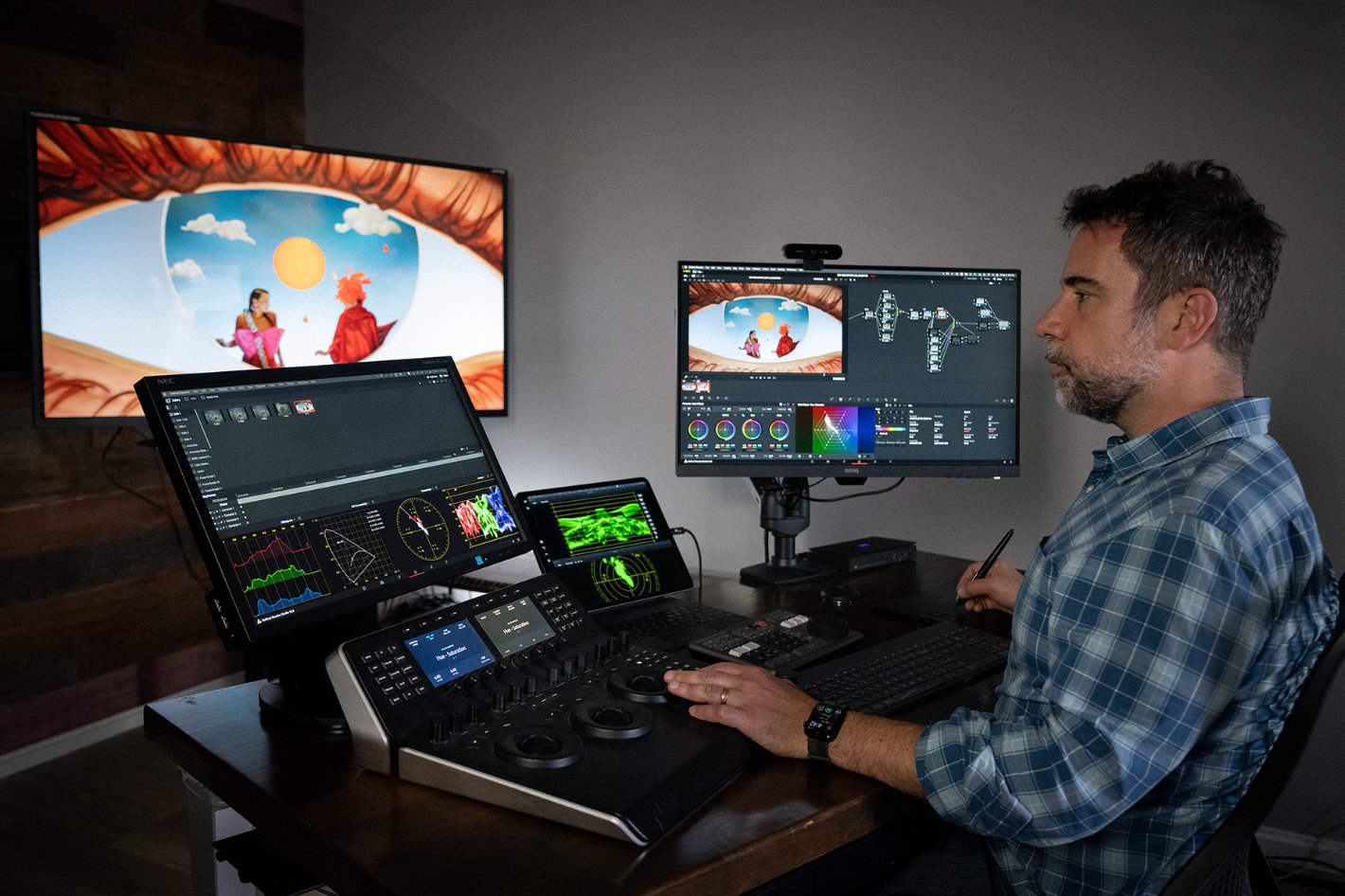
Colorist Matthew Schwab recently completed Spotify’s Wrapped campaign celebrating Taylor Swift’s status as the music streaming platform’s most streamed global artist in 2023. Schwab used DaVinci Resolve Studio editing, grading, visual effects (VFX) and audio post production software on the project. Schwab joined with Believe Media’s Floria Sigismondi, who directed the spot, to create the uniquely iconic imagery, complete with references to Swift’s distinct aesthetic elements such as dice and her trademark red lips.
Here is information, shared by Blackmagic Design, about the whole project:
Schwab, alongside Flawless Post, played a crucial role in ensuring the visual cohesion and impact of the campaign. “Floria shot these enormous practical sets, which were meticulously built to match CG backgrounds at Flawless,” said Schwab. “Combining the two required careful incorporation through color grading and VFX compositing.” Schwab’s proficiency in color grading not only brought richness and dimension to the visuals but also ensured the practical sets swiftly integrated with the 2D/3D design.
Working in DaVinci Resolve Studio, Schwab relied on more than just the color page to combine the multiple styles and looks into a cohesive vision. “DaVinci Resolve Studio was a perfect tool for this project,” said Schwab. “For the practical video I used a combination of layers in the edit page, importing mattes, creating garbage mattes with alpha outputs, and the new magic mask tool.
Drawing inspiration from artists such as Hieronymus Bosch and Andrew Wyeth, and Chinese scrolls like Zhang Zeduan’s “Along the River During the Qingming Festival,” Schwab employed his expertise to give the color a painterly textural feeling, reminiscent of his own experience with oil and watercolor painting. Leveraging DaVinci Resolve Studio, Schwab meticulously compared shots as layers on the fly, ensuring consistency with the desired lookset throughout the production process.
“Some of the 2D and 3D art elements were finished before the session while others were being imported while I was working,” continued Schwab. “I needed the versatility DaVinci Resolve offers to go from the color page and back to the edit page to compare different elements of the piece for the supervised color session and the sessions to follow. Because of this complexity, I used a combination of importing an XML, retiming and editing, and ‘dragging and dropping’ additional files and matte layers in the edit and color pages all throughout the session. It was an easy, hassle free process.”
Schwab found using the magic mask on the color page to work well with the tools under the Fusion page. “When I needed a new mask or to refine one I used either the new magic mask tool or I flipped over to Fusion. For comparison to the digital art, I could grab value tones and color HEX codes to match the grade. This powerful all in one versatility within DaVinci Resolve Studio made sure the final look was consistent with the many practical and CG layers.”
